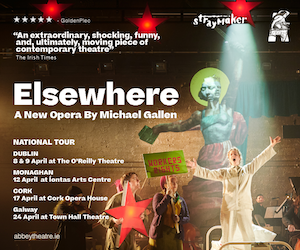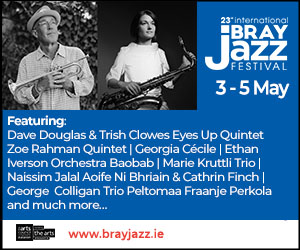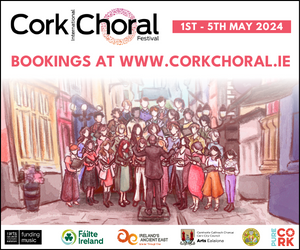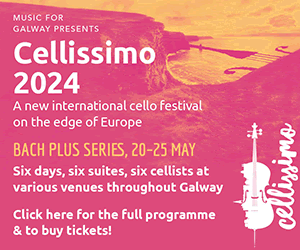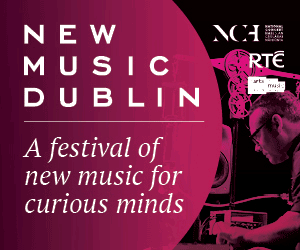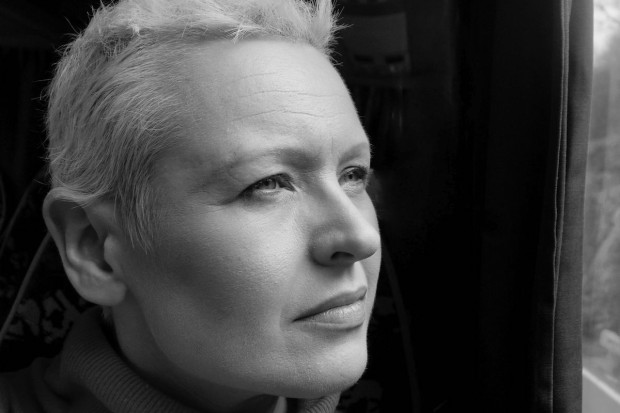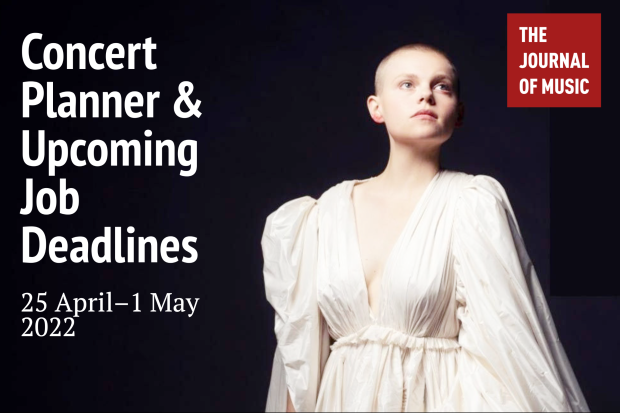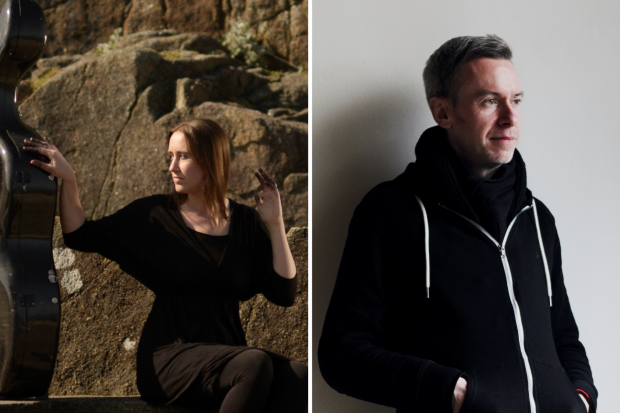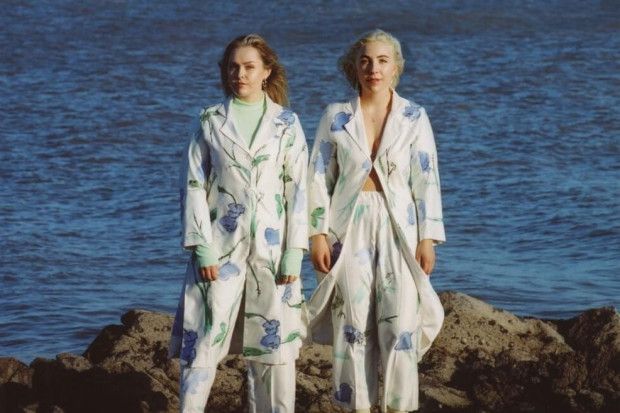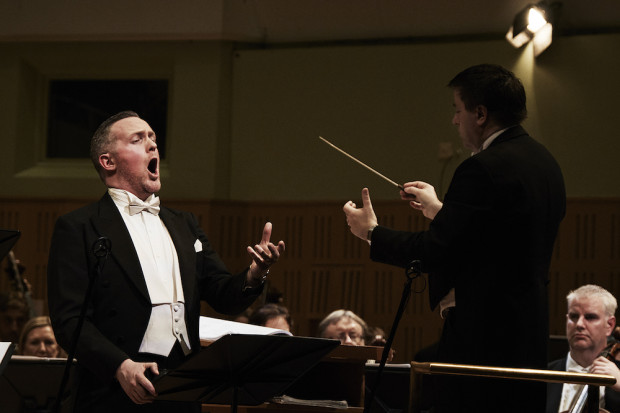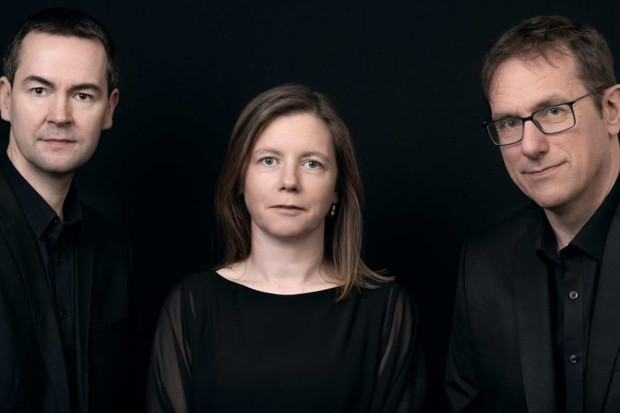Live Reviews: Horizons: Donnacha Dennehy / Strange Folk!: Crash Ensemble and Iarla Ó Lionáird
Horizons: Featured composer – Donnacha Dennehy
RTÉ NSO, Darragh Morgan (violin), National Chamber Choir (David Darcy, chorus master), Gavin Maloney (cond.)
NCH, Dublin, 30 January 2007
Strange Folk!: Crash Ensemble & Iarla Ó Lionáird
Samuel Beckett Theatre, Trinity College, Dublin, 10 February 2007
In 1999 I had the pleasure of interviewing Donnacha Dennehy for what was to be the last issue of Graph magazine. He spoke with refreshing candour, without pretension, with enthusiasm – about his own music, about musical life in Ireland, about different kinds of music (from classical to hiphop), about technology, about urban life and literature, about the style and aims of the Crash Ensemble. Looking back at that interview now, one thing that strikes me is the composers he refers to: Varese for his sense of space and for his imagining of forms of music as yet unrealisable, Xenakis, Feldman (perhaps surprisingly). Speaking of his own music, Dennehy came across as someone whose knowledge of and zest for technology was at the service of musical intuition. There was a sense of connection between the energy of some of his recent compositions (Junk Box Fraud, for example) and an open-minded, open-eared response to the energies in the life – the urban life, in particular – around the composer.
The composer of Hive, of Elastic Harmonic, of Grá agus Bás, works that featured in recent concerts in Dublin, is still very much the same person, though of course the years have seen some changes. Dennehy has had opportunities to write for brass ensemble, for full orchestra; he has had an impressive range of commissions; and he has developed fruitful relationships with like-minded composers and ensembles in various countries. Looking back at that 1999 interview, I am surprised to find how little the Bang on a Can ensemble and its associates figured. In many regards, this provided Dennehy with a constructive model for his own practice as a composer: it is better for a composer to create his own performing structure than to wait in frustration for others to come to him; a composer who operates in an informal, welcoming, contemporary, non-hierarchical style can draw listeners from a range of music publics (jazz, dance, rock, classical, and so on) that would not normally be attracted to contemporary composers; discarding the modernist fear of beat or pulse opens music up to contemporary energies. There was clear affinity rather than shrewd strategy behind Dennehy’s adoption of the Bang on a Can model.
Before looking at Dennehy’s recent works, it is probably best to state where my taste diverges from the composer’s. It seems to me that as an organisational model, Bang on a Can has been positive for Dennehy; where actual composition is concerned, I have serious reservations. It seems to me that the combined influence of Reichian minimalism, on the one hand, and the brasher, street-wise style of Gordon/Wolfe/Lang and co, on the other, has not always allowed Dennehy to build on the intuitive, poetic impulses that featured in that conversation in 1999. Though effective and enjoyable in its way, it seems to me that the music of this school offers listener and composer more a set of procedures than a tool for imaginative exploration and that it is in danger of cramping Dennehy’s imagination. One of Dennehy’s striking characteristics – and an asset to him as a composer – is a certain glee in overturning expectations. He relishes new ideas, new sounds, new ways of playing with old sounds. He has no preconceptions or fears about where ideas should come from. As he said in the interview that preceded his Horizons 2007 concert, ‘composers are kids…’. Or again, in the score of Hive: ‘Do not fear any “kitsch” factor as this develops, but don’t ham it up either. Just be strict – and everything comes from that.’
The January 30th Horizons concert featured two Dennehy compositions alongside a stark David Lang composition, Grind to a Halt. Though Elastic Harmonic gives pride of place to the solo violin (here played by Darragh Morgan), Dennehy does not want it to be seen as a violin concerto in the nineteenth-century sense. Instead he reached for a spatial metaphor, seeing the violin part as sculptural, with the orchestra forming a varying backdrop that could at times push forward and almost engulf the solo part. At times, the sound was straight from the American textbook; at times, it had a sense of expectancy and an almost yearning quality of its own. Hive was also a mixed experience. As Dennehy explained beforehand, dividing the orchestra in two and tuning the sections a quarter-tone apart meant that though everyone was playing in tune, the massed orchestra could create a thick soup of textures and overtones. Here, in the unusual choice of text (a passage from Byron about London and a Victorian prose passage about Irish immigrants), in the sometimes near-hysterical sound of the choir (courtesy of NCC), and in the gusto with which huge brassy sounds and whacking percussion came at us, we were in the presence of the free-spirited Dennehy. On the other hand, though Dennehy spoke with relish of the ‘dirty’ sounds he had created, there was also something not dirty enough, something procedural, about some of the material offered to the players (as in the recurring harp-piano-vibraphone combination). The RTÉ NSO, let it be said, seemed happily in tune with the composer’s demands.
On February 10th, the Crash Ensemble offered a new work of Dennehy’s alongside a number of other folk-derived pieces: Azerbaijani composer Franghiz Ali-Zadeh’s pleasant elaboration of traditional-sounding motifs on what we might call semi-prepared piano; an extended (perhaps slightly over-extended) piece by Osvaldo Gollijov featuring vivid klezmer-style clarinet (Deirdre O’Leary) as well as more religious material; and Evan Ziporyn’s piece for solo cello (Kate Ellis) and tape, constructed – I would never have guessed – over a base provided by a piece of gamelan music.
There was something approaching suspense as we came to the last item on the programme, as many wondered just what the unusual meeting of Dennehy’s style and imagination with the sean-nós of Iarla Ó Lionáird would produce. Though Dennehy had gone to ‘Aisling Gheal’, the song indelibly associated with Ó Lionáird’s voice, he had pared much of it away and constructed something new and strange that (despite some passages of routine repetition and variation) was a creative challenge to both Ó Lionáird and the ensemble. Ó Lionáird’s expressive singing had to assert itself against ensemble writing that threatened to overwhelm it. The overall experience was gripping, with moments of fierce, almost ritualistic clangour. It will be interesting to hear Grá agus Bás again. Quite apart from its own qualities and merits, this performance – conducted by Alan Pierson, whose long, expressive fingers deserve a paragraph to themselves – confirmed that Donnacha Dennehy has retained the courage and the capacity to follow his own intuitions, and in the process to surprise both himself and his listeners.
Published on 1 March 2007
Barra Ó Séaghdha is a writer on cultural politics, literature and music.







